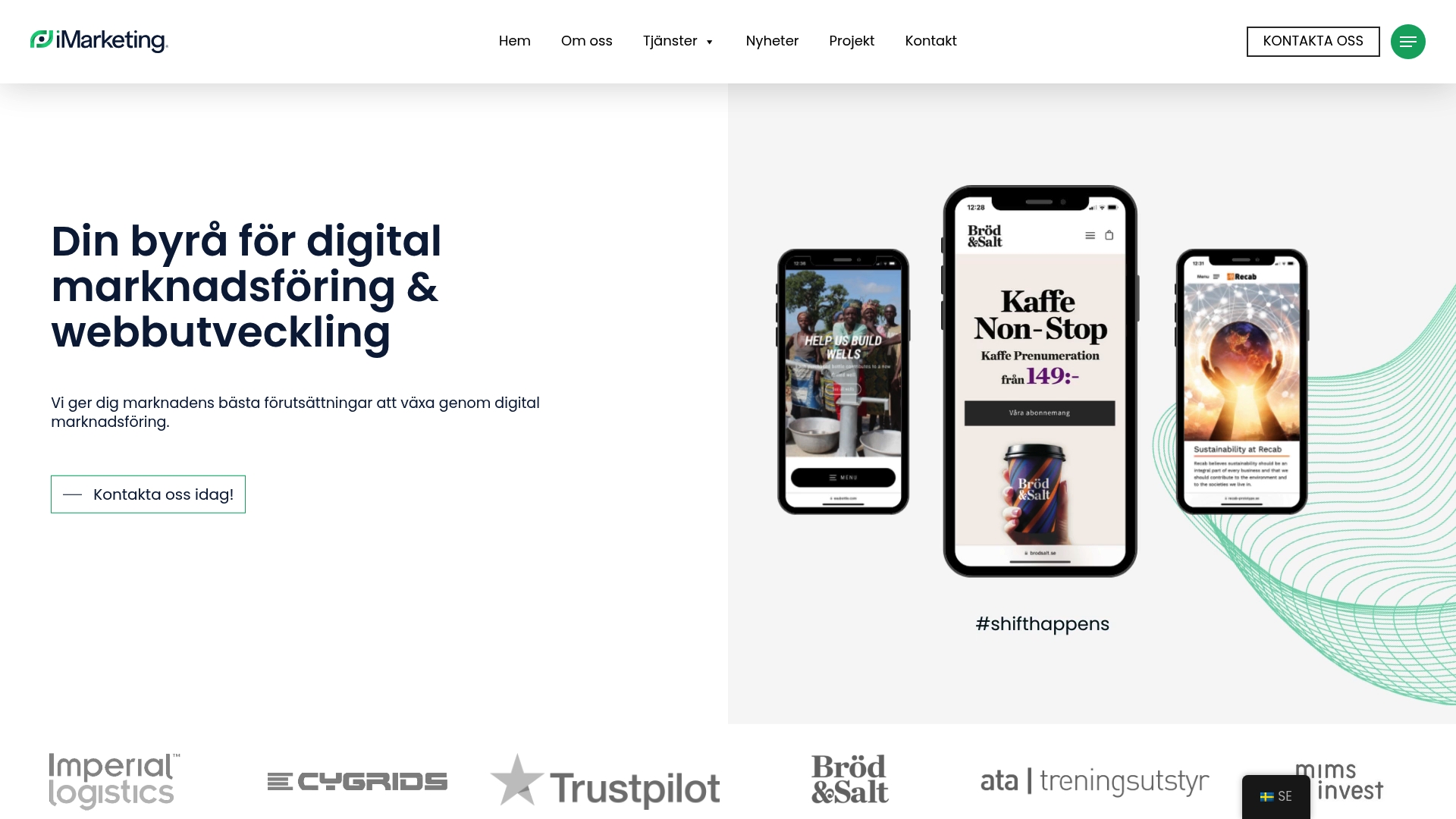More than 80 percent of businesses struggle to structure their social media efforts. When everything is moving so fast, it’s easy to feel overwhelmed by platform choices, unclear content, and difficult-to-measure goals. By creating a clear workflow, you can actually reach the right people, increase engagement, and see tangible results—step by step.
Table of contents
- Step 1: Define the goals and target audience for the presence
- Step 2: Select and customize relevant platforms
- Step 3: Plan and schedule engaging content
- Step 4: Implement tools for publishing and tracking
- Step 5: Evaluate and adjust the workflow continuously
Quick Summary
| Key points | Explanation |
|---|---|
| 1. Set concrete goals | Define measurable goals for your presence, such as follower count or engagement. |
| 2. Identify your target audience | Create detailed personas to tailor content to potential customers. |
| 3. Choose the right platforms | Focus on platforms where your target audience is most active, like LinkedIn or Instagram. |
| 4. Plan engaging content | Use a content calendar and vary formats to attract audience interest. |
| 5. Evaluate and adjust continuously | Conduct regular evaluations of results to adjust the strategy. |
|
Step 1: Define goals and target audience for the presence
When optimizing your social media workflow, the first step is to create a clear and thoughtful strategy by defining your specific goals and understanding your exact target audience. This will determine how effectively you will be able to build your digital presence and communicate with the right people.
To define your goals, you need to be extremely specific. Instead of general requests like “increase visibility,” set measurable goals. Examples might be to increase your follower count by 20% in the next three months, generate 50 leads from social media each month, or increase your engagement rate by 15%. Step by step social media strategy can help you structure this process further.
When identifying your target audience, demographic data is not enough. You need to create detailed personas that represent your ideal customers. Include aspects such as age, occupation, interests, challenges, and digital habits. The more precise your understanding, the more tailored you can make your content. A good rule of thumb is to have a very well-defined narrow target audience rather than a broad and unspecific group that no one feels is relevant.
Beware of a common trap: trying to reach everyone everywhere. Instead, focus on the platforms where your specific audience is most active and engaged. LinkedIn works great for B2B communication, while Instagram is better suited for visual and younger audiences. By being strategic and targeted, you create a social media presence that truly reaches and influences the right people.
Step 2: Select and customize relevant platforms
Once you have defined your goals and target audience, the next critical step is to choose the right social media platforms that fit your specific business and communications strategy. Not all platforms work equally well for all businesses and industries.
Each social media platform has its own unique characteristics and demographics. Facebook is great for broad communication and older age groups, while Instagram is perfect for visual content and younger audiences. LinkedIn is invaluable for B2B communication and professional networking. Swedes and the internet new habits on Facebook gives you insightful details about Swedish usage patterns.
When choosing platforms, consider where your specific audience is most active. Analyze where your potential customers spend their time online and which communication channels they prefer. A tech company will likely have the most success on LinkedIn, while a fashion or lifestyle company might thrive on Instagram or TikTok. Don’t be afraid to limit yourself to a few well-chosen platforms rather than spreading yourself too thinly across all channels.
A crucial detail is to adapt your content to each platform’s specific format and audience expectations. Short videos work on TikTok, while long, professional articles are better suited to LinkedIn. Keep in mind that each platform requires its own communication style and content strategy for maximum impact.
Step 3: Plan and schedule engaging content
Once you have chosen the right platforms, the next crucial step is to plan and schedule content that truly captivates your audience and drives engagement. Successful social media is not just about posting regularly, but about creating meaningful and relevant content.
An effective content strategy requires careful planning and variety. How to make your audience love your content provides valuable insights into how to create memorable content. Create a content calendar that mixes different formats like images, videos, stories, and short texts. For a tech company, this could mean a mix of expert articles, behind-the-scenes clips, and infographics that explain complex tech concepts.
When scheduling your content, timing is key. Analyze when your specific audience is most active online and plan accordingly. Most social media platforms have built-in analytics tools that show you exactly when your followers are most engaged. Experiment with posting times but be consistent. If you promise weekly updates, stick to them.
 Avoid bombarding followers with too much content, which can lead to them scrolling past or unfollowing you.
Avoid bombarding followers with too much content, which can lead to them scrolling past or unfollowing you.
A pro tip is to use scheduling tools that help you prepare and automate your posts. This frees up time for you to focus on creative content instead of manual publishing. However, be aware that automation should never replace genuine human interaction. Always respond to comments and messages personally and quickly to build genuine relationships with your audience.
Step 4: Implement tools for publishing and follow-up
Once you have your content planned, the next critical step is to implement the right tools that simplify publishing and enable effective tracking of your social media results. The right tools can significantly streamline your workflow and give you deeper insights into your audience engagement.
Best 8 Social Media Planning Tools will help you find the most effective solutions for your specific needs. Choose tools that allow you to schedule posts on multiple platforms simultaneously and that offer detailed analytics reports. Some key features to look for include the ability to track engagement levels, audience insights, and conduct competitor analysis.
When choosing a tracking tool, focus on measurable metrics like conversion rate, reach, and interaction rate. Most professional tools offer real-time reports that show exactly how your content is performing. Pay attention to the tools’ ease of use and make sure they integrate seamlessly with the platforms you work with. A good tool should not only collect data, but also present it in a way that helps you make strategic decisions.
A crucial tip is not to rely too much on automated tools. Even the best systems can miss nuances in human communication. Combine the analytical power of the tools with your own strategic insight.
Set aside regular time to manually review reports, make adjustments, and maintain the personal touch that is crucial for genuine audience engagement.
Step 5: Evaluate and adjust the workflow continuously
A successful social media workflow is never static, but requires continuous evaluation and adaptation. Your strategy must be flexible and responsive to audience reactions and changing digital trends.
Conduct monthly or quarterly evaluations of your social media results. Analysis of concrete measurement points and strategy gives you key insights into how to systematically review your performance. Compare key metrics like reach, engagement, conversion rates, and audience composition. Look for patterns that show which types of content perform best and which platforms deliver the highest returns.
As you analyze the results, be prepared to make bold adjustments. If a content format isn’t working, don’t be afraid to experiment with new approaches. Be aware of seasonal variations and external factors that can impact your audience engagement. A successful social media strategy is about continuous learning, adaptation, and the courage to try new methods.
A crucial tip is to never stop evolving. Digital landscapes change rapidly and what worked last month may not be as effective now. Invest time in learning new trends, following industry developments and being prepared to re-examine old assumptions. Success comes to those who are agile, intelligent and prepared to change.
Optimize your social media workflow with the right partner
Creating a well-functioning social media workflow requires clear goals, the right platforms, and tools that simplify the entire process. Do you recognize the challenge of defining your target audience, scheduling engaging content, and effectively tracking results? You’re not alone. Many people get stuck trying to do everything on their own, risking both time and energy on ineffective efforts.

Let iMarketing.se help you take control of your digital presence. We offer tailored digital marketing solutions such as social media management, analytics and strategy development all tailored to drive real growth and increased visibility for your business. Visit our social media planning tools page to see how smart tools can simplify your work or read more about growing online with the right strategy.
Start your journey towards an efficient and results-oriented workflow today at iMarketing.se and create the digital presence your business deserves.
Frequently Asked Questions
How can I define concrete goals for my social media workflow?
To set concrete goals, focus on specific, measurable results, such as increasing your follower count by 20% in three months. Write down goals that include numbers and time frames to keep you accountable.
What factors should I consider when identifying my target audience?
Identify your target audience by creating detailed personas that include factors like age, interests, and digital habits. This allows you to tailor your content to better reach the right people.
How do I choose which social media platforms to use?
Choose platforms based on where your target audience is most active. If your audience is younger, Instagram or TikTok may be better choices than Facebook, while B2B companies often do best on LinkedIn.
What should I include in my social media content calendar?
Your content calendar should include a mix of different formats such as images, videos, and articles. Plan to include varied content with a clear publishing time to maximize engagement.
How do I analyze the results of my social media workflow?
Analyze your results by reviewing metrics like engagement and reach. Schedule regular monthly evaluations to identify patterns and adjust your strategy based on what works best.
What tools can I use to schedule social media posts?
Using tools that allow you to schedule posts across multiple platforms at once and offer analytics reports can save you time and help you focus on creating better content.


